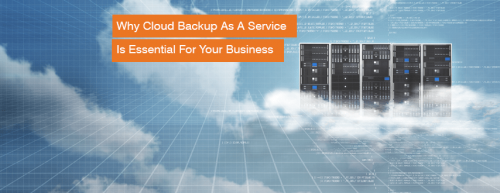

2018/12/03 Cloud Backup & Disaster Recovery Solutions 2108 visit(s)
Ctelecoms

Data is the essence of every organization. A staggering 60% of companies that lose critical data shut down within 6 months of the loss. Data loss, and the worry that surrounds it, can be easily avoided by pairing SaaS applications with a complete BaaS backup and recovery solution.
Yet, transitioning your business-critical workloads from on-premise to the cloud does not have to be challenging or intimidating. To help you migrate confidently and with lower risk, Ctelecoms is offering free Microsoft Cloud Migration Assessments designed to explain what steps need to be taken to start migrating applications, data, and infrastructure.
Upon completion of the free assessment you will receive a tailored end-to-end analysis for your business that will guide you towards the right cloud migration path.
Cloud backup is the easiest way to get the security of off-site backup for your important files. Cloud backup is exactly what it sounds like. Your data is stored in an online repository, where it’s accessible to you when you need it. It works like this: You download a desktop client to your PC, select the folders you want to back up, and that data uploads to the service on a set schedule. Then if a catastrophe strikes, such as a ransomware attack or robbery, you have a clean, up-to-date copy of your data stashed on a server somewhere, all safe and sound.
With cloud backup as a service, you can take advantage of the cloud’s elasticity to pay for only what you need, when you need it. Backup as a service offers many benefits, including:
Because your data is stored in the cloud, you are not subject to the typical threats of hackers, natural disasters, and user error. In fact, data that is stored in the BaaS is encrypted, which minimizes the risks your data can incur.
Due to multiple levels of redundancy, if data is lost or deleted (most frequently through individual user error or deletion), backups are available and easily located. Multiple levels of redundancy means that your BaaS stores multiple copies of your data in locations independent of each other. The more levels you have stored the better, because each level ensures that your data is safeguarded against loss as much as possible, allowing you to access a backed-up version of your data if it ever gets lost.
With cloud backup as a service, you can take advantage of the cloud’s elasticity to pay for only what you need, when you need it. No need to overprovision resources. Performance is also a factor because disk or tape is likely going to be slower than the cloud, and that will come at a higher cost.
In the world of backup, it is widely accepted that to achieve best practices, you must adhere
to the “3-2-1 rule,” which is:
3 – Maintain at least three copies of your data.
2 – Store data on at least two different types of storage media.
1 – Keep one copy of the backups in an off-site location.
For many companies, getting backups off site can be a challenge because of limited bandwidth, expanding data volumes and lack of resources to build or maintain a true off-site backup repository. With the right cloud backup-as-a-service solution, however, you can easily move backup to a cloud service provider with the necessary bandwidth at no additional cost.
When it comes to meeting the needs of today’s businesses and achieving the critical benefits cited above, the No. 1 option for Saudi organizations is to use cloud solutions from Microsoft & Veeam in conjunction with Ctelecoms. This combination delivers:
Is your organization ready to take its first step or the next step on the cloud journey by leveraging cloud backup as a service? get in touch with Ctelecoms today.